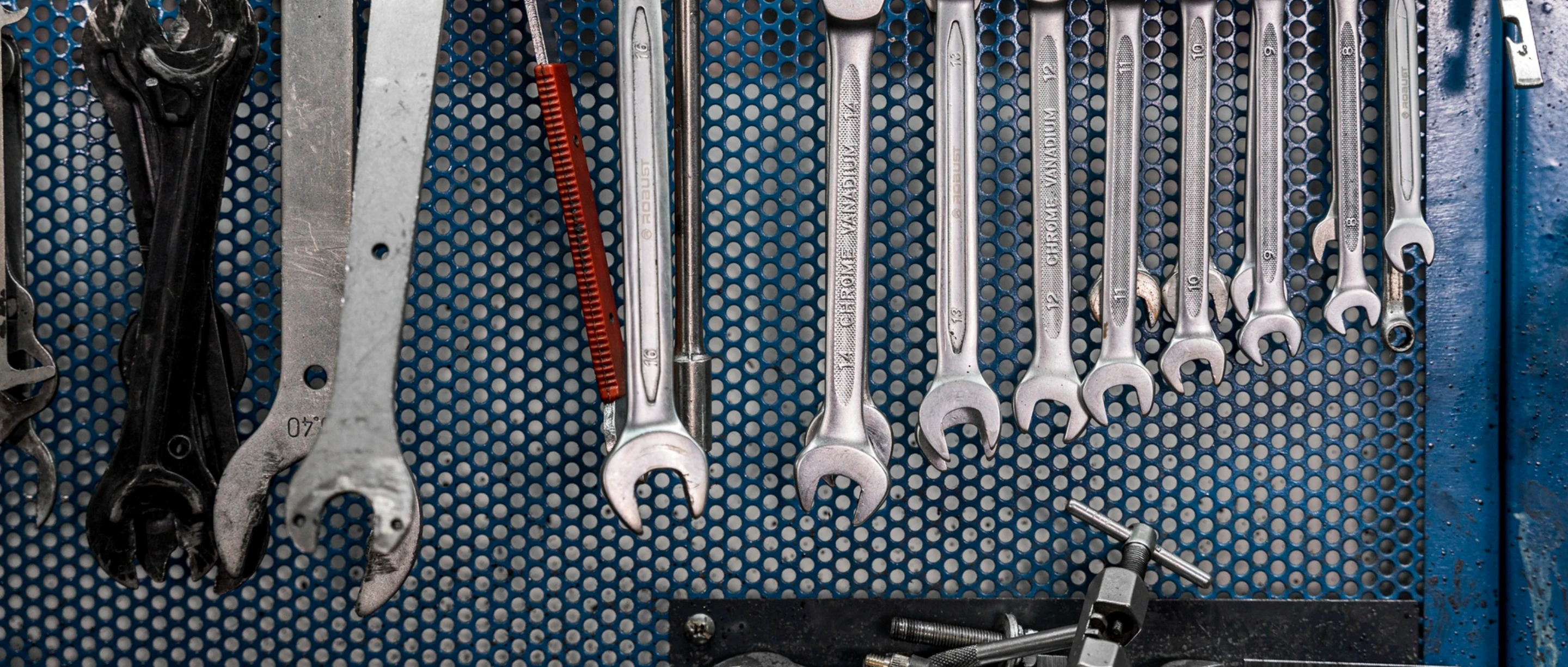Archive for August 2024How Cool is That! (Coolant level sensor replacement)Posted August 25, 2024 2:59 AMYour vehicle’s engine runs hot. It should, since it’s a series of little explosions that create the power that gets you going where you want to go. To keep the engine cool, engineers have designed wonderful cooling systems that use liquid coolant, hoses, and a radiator to transfer the heat from the engine to the outside air. In order for the system to work right, it has to have the right amount of that liquid coolant in it. So that you know when the coolant has dipped below the correct amount, there is a sensor that keeps an eye on it. When the coolant gets low, that sensor lights up a signal on the dash to alert you. It may literally say “Check Coolant” or it may have a picture that looks like an old-style bulb thermometer sitting in liquid. Your owner’s manual will usually tell you exactly what the one in your vehicle looks like. If that sensor system isn’t working right, you could wind up driving for a long time with not enough coolant in the engine, and the excess heat can cause some extensive—and expensive—damage. There are a couple of ways you will know if something’s wrong with your coolant level sensor. One is when you top off the coolant tank, and the low coolant light stays on. If you suspect yours might be having a problem, bring it in so we can thoroughly check your coolant system. If it is a sensor, we can run a test to see where the problem is in your cooling system. It could be a bad sensor, but it also could be that there is something causing your coolant level to be low. If the sensor needs replacing, the technician will replace it, fill your coolant level to the manufacturer’s recommended level, and test for any leaks in the system. Really, how cool is that? Car Doc On The Island test Why did my vehicle fail its emissions test?Posted August 18, 2024 2:59 AMWe all want to breathe clean air and keep our planet green. One of the ways to do that is by requiring all vehicles with internal combustion engines to pass an emissions test. That’s because these vehicles can be big polluters. Everyone wants their car to pass the test so they can continue their day-to-day driving routine. But then comes that one day when they tell you your vehicle has failed. Why does that happen? One of the most common reasons is that your gas cap is leaking or loose (or maybe you don’t even have one on your vehicle!). The gas cap is supposed to seal in vapors, but sometimes its seals or gaskets dry out or crack. Replace it, and you’re good to go. Another common reason your vehicle failed the test is that your catalytic converter isn’t doing its job. It is supposed to convert toxic gases from your engine into ones that don’t pollute the air. There are many reasons the catalytic converter may not be working. It may be physically damaged, or the steady flow of exhaust gases has fouled the converter. You may have a bad oxygen sensor. It’s supposed to measure how much oxygen is in your exhaust. This can cause the air-fuel mixture to be too rich, resulting in too many hydrocarbons in the exhaust. Your ignition system may also have problems, such as worn-out spark plugs. Dirty fuel injectors can contribute to excess emissions. Believe it or not, a dirty engine air filter may be the culprit. If it hasn’t been replaced for a while, your vehicle may be emitting too many hydrocarbons - something that will cause your vehicle to fail the emissions test. You can usually avoid a failed emissions test by maintaining your vehicle regularly. The best way to do that is by bringing it to our trained technicians, so your vehicle gets the service it needs, scheduled and non-scheduled. Plus, you’ll be doing your part to keep our air clean. Car Doc On The Island Straight to the Point (Alignment Signs of Problems)Posted August 11, 2024 2:59 AMIt’s just common sense that your vehicle will drive better if all the wheels are lined up with each other and the road the way the engineers intended. When they’re not, that is called being out of alignment. Here are some signs that your alignment has problems.
We have equipment designed to quickly and accurately measure your vehicle’s alignment. We can make precise adjustments to make sure you are headed straight where you want to go. Have your alignment checked regularly. It can help prevent more serious problems in the future and make your vehicle drive as beautifully as you remember it used to. Car Doc On The Island Slippery When Wet (Driving on Wet Leaves)Posted August 4, 2024 2:59 AMWhen the leaves fall, you might take a sightseeing trip to see them at peak color. Or you may simply live in a spot where there are a lot of trees. When those leaves get wet, you'd be surprised to learn just how slippery they can be. We all know ice is slippery to drive on. What causes tires to slip on ice is a thin layer of water that comes between the road and your tires. Wet leaves can have the same effect. The surfaces of leaves are super slick when they're dry, even worse when you add a little moisture. There's one other thing about leaves. They are smaller than each tire's footprint, so your tread grips the pavement with uneven traction. One study showed that your stopping distance can more than double on a surface covered with wet leaves when compared to that same road when it's dry. Double! That can spell trouble. So if you find yourself heading into an area with wet leaves on the road, slow down before you get into a jam. If you do start skidding, use the same driving techniques as you would on ice. Let off the accelerator, resist jamming on the brakes and steer into the skid. Again, speed can get you into trouble fast on a slippery surface. One thing that can help is having tires that are appropriate for the way you drive and the places you travel. Your service advisor can offer suggestions for tires that are right for you. Have a technician examine your tread depth and the condition of your tires' rubber. Sun can break down rubber over time, and age can cause tires to fail, even if their tread seems to be deep enough. Your tire is the point of traction between your vehicle and the road. Uncontrolled skids spell trouble and danger. Slow down when you see wet leaves on the road. They can make traction disappear before you know it.
| ||
SearchArchiveApril 2016 (16)May 2016 (5) June 2016 (4) July 2016 (4) August 2016 (5) September 2016 (4) October 2016 (5) November 2016 (4) December 2016 (4) January 2017 (5) February 2017 (4) March 2017 (4) April 2017 (5) May 2017 (4) June 2017 (4) July 2017 (5) August 2017 (4) September 2017 (3) October 2017 (5) November 2017 (4) December 2017 (3) January 2018 (5) February 2018 (4) March 2018 (4) April 2018 (5) May 2018 (4) June 2018 (4) July 2018 (5) August 2018 (4) September 2018 (5) October 2018 (4) November 2018 (4) December 2018 (5) January 2019 (5) February 2019 (4) March 2019 (5) April 2019 (4) May 2019 (4) June 2019 (5) July 2019 (4) August 2019 (4) September 2019 (5) October 2019 (4) November 2019 (4) December 2019 (5) January 2020 (5) February 2020 (4) March 2020 (5) April 2020 (4) May 2020 (5) June 2020 (4) July 2020 (4) August 2020 (5) September 2020 (4) October 2020 (4) November 2020 (5) December 2020 (4) January 2021 (6) February 2021 (4) March 2021 (4) April 2021 (4) May 2021 (5) June 2021 (4) July 2021 (4) August 2021 (5) September 2021 (4) October 2021 (5) November 2021 (4) December 2021 (4) January 2022 (6) February 2022 (4) March 2022 (4) April 2022 (4) May 2022 (5) June 2022 (4) July 2022 (5) August 2022 (4) September 2022 (4) October 2022 (5) November 2022 (4) December 2022 (4) January 2023 (5) February 2023 (4) March 2023 (4) April 2023 (5) May 2023 (4) June 2023 (4) July 2023 (5) August 2023 (4) September 2023 (4) October 2023 (5) November 2023 (4) December 2023 (5) January 2024 (5) February 2024 (4) March 2024 (5) April 2024 (4) May 2024 (4) June 2024 (5) July 2024 (4) August 2024 (4) September 2024 (5) October 2024 (4) November 2024 (4) December 2024 (5) January 2025 (4) February 2025 (4) March 2025 (5) April 2025 (4) May 2025 (4) June 2025 (5) July 2025 (4) August 2025 (5) September 2025 (4) October 2025 (4) November 2025 (5) December 2025 (4) | CategoriesKeys to a long lasting vehicle (2)Timing Belt (3)Fuel Economy (9)Brakes (13)Fluids (7)Maintenance (8)Tires and Wheels (3)Air Conditioning (9)Safety (1)Exhaust (8)Service Standards (3)Steering (10)What Customers Should Know (75)Alignment (6)Dashboard (1)Fuel System (5)Cooling System (6)Alternator (6)Battery (10)Auto Safety (5)Windshield Wipers (2)Battery Replacement (1)Service Intervals (2)Wheel Bearings (1)Customer Detective Work (1)Shocks & Struts (2)Tire Rotation and Balancing (3)Winter Tires (1)Tires (8)Suspension (2)Inspection (4)TPMS (2)Drive Train (4)Automotive News (2)Safe Driving (1)Fuel Saving Tip: Slow Down (1)Winter Prep (1)Check Engine Light (2)Oil Change (5)Brake Service (5)Differential Service (1)Serpentine Belt (1)Spark Plugs (1)Older Vehicles (1)Headlamps (3)Transmission (5)Transfer Case Service (1)PCV Valve (1)Engine Air Filter (2)Cabin Air Filter (2)Fuel Pump (1)Trip Inspection (2)Shocks and Struts (1) | |

AUTONET TV

Testimonials

Excellent! Excellent service. Walked at was helped right away! Charge me for repairs with no extras added. Honest place to take my car~ Ann D, 12/30/2025

I can’t say enough good things about Car Doc on the Island. From day one, they’ve always taken care of me like family, not just another number walking through the door. It’s rare these days to find honest mechanics who genuinely care about doing the right thing — but this place is exactly that. They take the time to explain what’s actually needed, what’s not urgent, and they never try to upsell or pressure you into unnecessary repairs. Their pricing is fair, transparent, and honest, which gives you real peace of mind when you’re already stressed about car issues. Every visit, the job gets done right the first time, and the quality of their work shows. You can tell they take pride in what they do and stand behind it. If you’re looking for a reliable auto repair shop in Venice, Florida, with trustworthy mechanics, great service, and fair pricing — this is the place. I wouldn’t take my car anywhere else. Highly recommend Car Doc on the Island to anyone who values honesty, quality work, and real customer care.~ Yamzey Gonzalez, 12/30/2025










